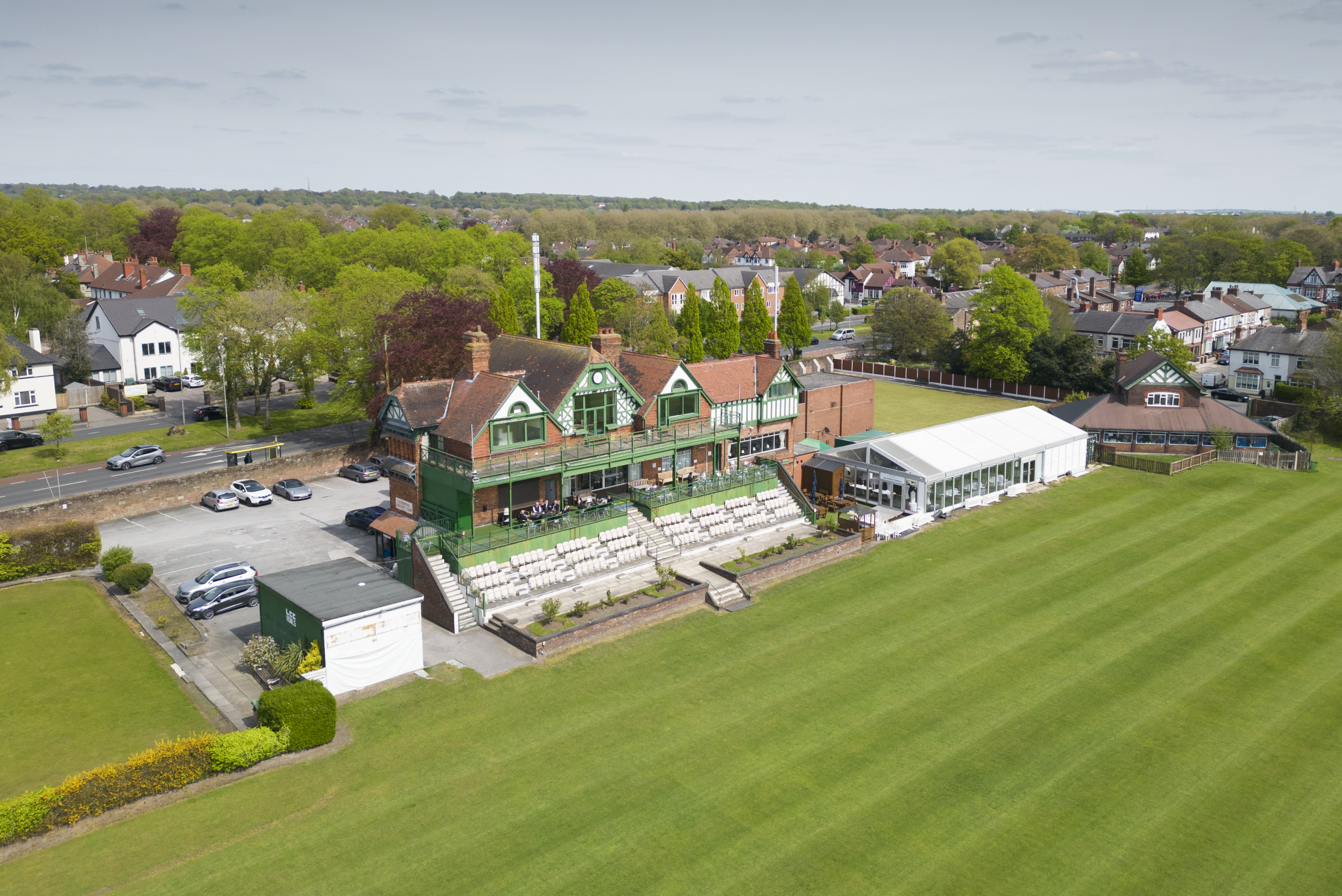Liverpool Cricket Club Listed at Grade II
Liverpool Cricket Club's main pavilion, built in 1880 by renowned architect Thomas Harnett Harrison, has been listed at Grade II by the Department for Culture, Media and Sport (DCMS) following advice from Historic England.
The listing recognises the pavilion's special architectural features and its significant place in the history of cricket and sporting events in the North West.
The pre-1914 cricket pavilion holds the distinction of being the oldest surviving cricket pavilion in the country that is located at a first-class cricket ground.
The interior of the pavilion retains its original layout, with a well-preserved full-width, first-floor former ballroom and a former billiard room above. It also features a range of fixtures and fittings, including an impressive large war memorial board.
Over the years, the club’s grounds have hosted numerous first-class and international cricket matches and cricketing stars, including Australia’s Don Bradman, widely regarded as the greatest batter of all time.
Aigburth Cricket Ground has served as the home of Liverpool Cricket Club since 1881. It was inaugurated on 30 April 1881, with the first first-class cricket match against Cambridge University held on 13 and 14 June 1881. The ground later hosted its inaugural international match against the Australians in 1896.
They have also played host to football matches, including an international encounter between England and Ireland in 1883. Additionally, the grounds alternately held the Northern Tennis Tournament with Manchester from 1882 to 1928 and provided pitches for Liverpool Rugby Club from 1884 to 1963.
Despite several modifications throughout the 20th century, including changes to the balcony, veranda, and tiered terrace, the pavilion has retained its significance and continued to serve as a cherished venue for cricket and other functions.
Liverpool Cricket Club deserves its place on the National Heritage List for England - ensuring the preservation and recognition of this gem - because the main pavilion is such a rare survivor of sporting architecture from before the First World War and it has retained so much of its original intricate and high-quality design. It’s had a great knock at 143 years not out and I’d like to think that Don Bradman himself would have been impressed by its endurance.
We are very proud of the history of the pavilion and of our past and present members, going back to the Club's initial formation in 1807. These include two members who were each awarded one of the nation's highest honours, the Victoria Cross, Captain Noel Chavasse and Lieutenant Eric Stuart Dougall, both of whom have rooms named in their honour in the pavilion. The war memorial noted in the listing also holds the names of more brave souls who served in both World Wars. Other notable names in our membership include Joseph Bruce Ismay, the owner of the Titanic. The prestigious Grade II listed pavilion is our pride and joy and we hope that with listed status we can pursue grant opportunities to help with its ongoing maintenance.
We are bowled over that our application for Liverpool Cricket Club’s building to be listed was successful. This is an important Victorian building as the oldest remaining cricket pavilion in the country used for county and national games. It has hosted cricket, football and tennis events since 1881. We hope that joining the national list will secure the building's survival long into the future and encourage the Club to consider sensitive restoration of the windows to the original design. Thanks as ever to our team of listing volunteers who work hard researching this and other buildings to help protect our nationally important Victorian and Edwardian heritage.





